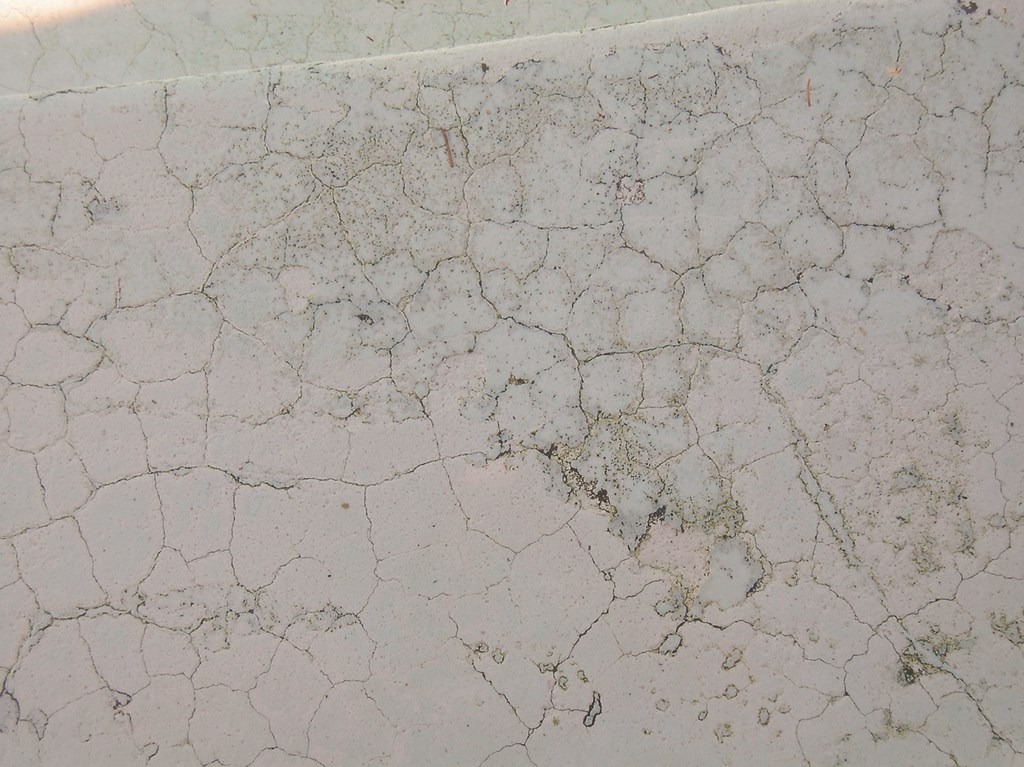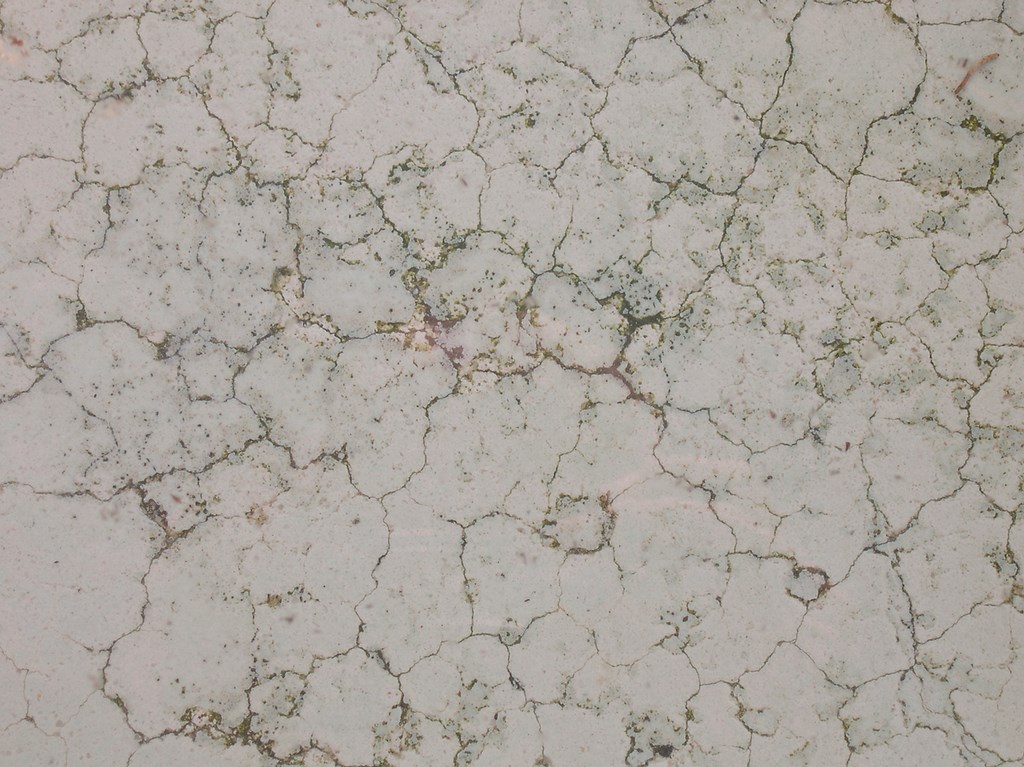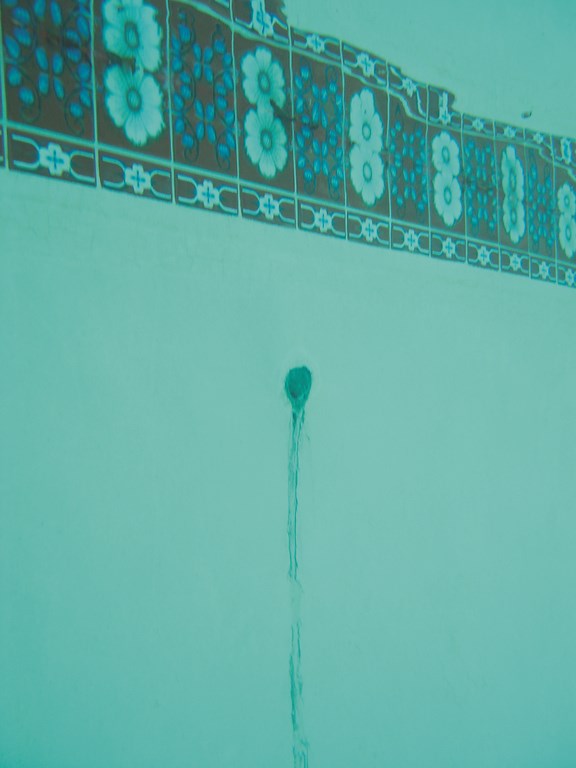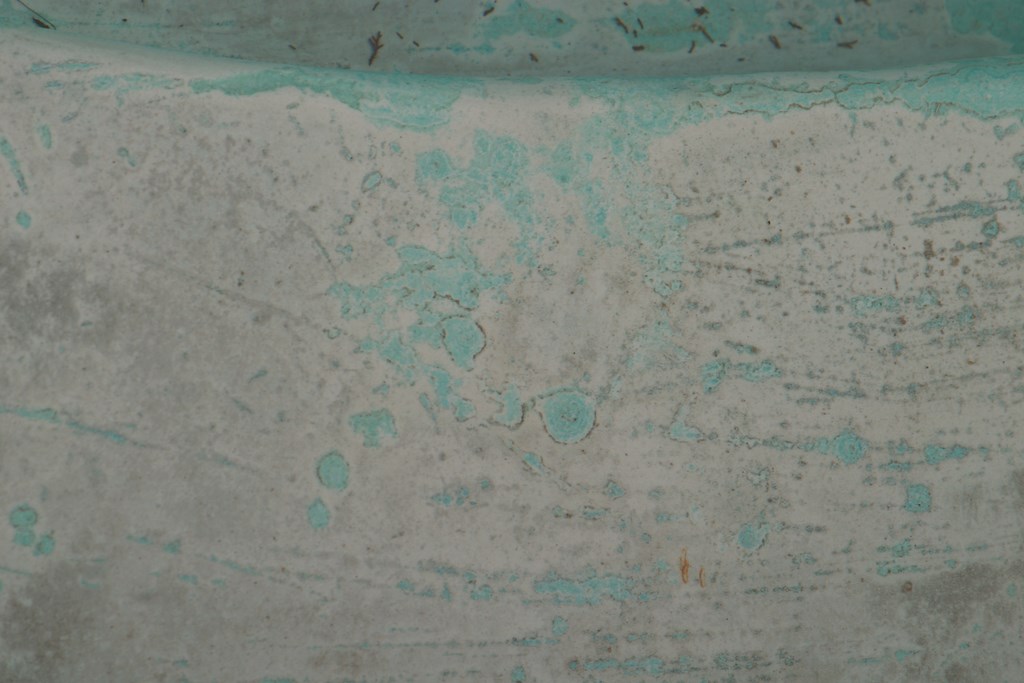Good Chemistry
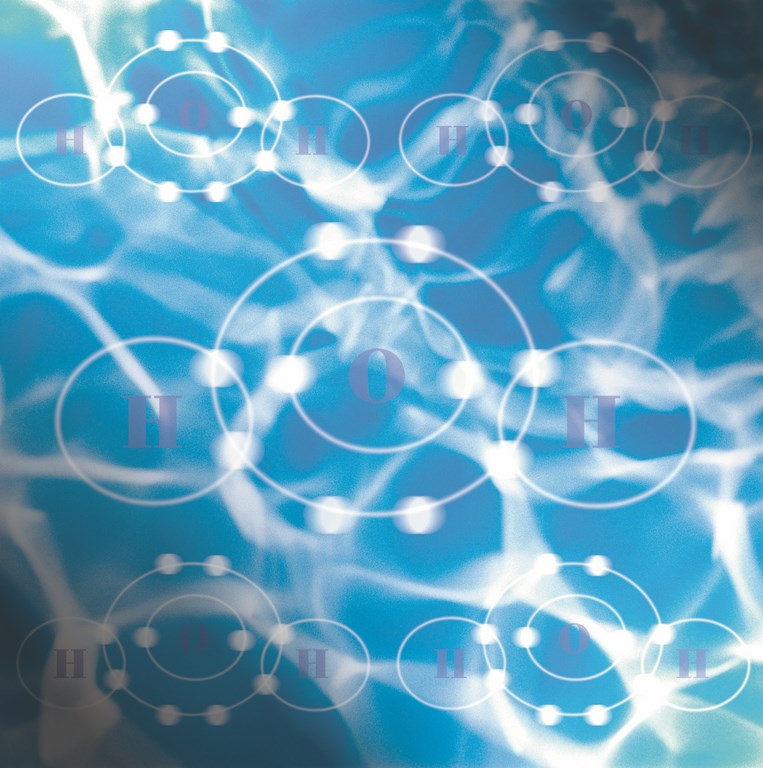
|
Water and cement-based materials interact in so many ways and on so many levels that it’s tough to sort everything out. From initial issues of hydration and curing to a range of longer-term, maintenance-related concerns, says chemistry expert Jeff Freeman, cementitious products in submerged environments react so distinctly to water’s presence that it is indeed essential for watershapers to consider what’s up when putting them together. |
Water and concrete are a powerful combination that has stood at the heart of the watershaping arts for millennia. Despite a track record that dates to time-honored civilizations, however, the full dynamics of what happens when water is placed in long-term contact with concrete remain the subject of discussion, debate and even controversy to this day.
Those discussions move forward in a variety of contemporary forums. The subject of water’s interaction with concrete, plaster and other materials, for example, has long been the study of materials scientists associated with the Portland Cement Association and the American Concrete Institute, while plaster-related problems within the mainstream pool industry have spawned years of formal and informal research having to do with a variety of chemical reactions and variables. Suppliers have also participated, developing myriad products designed to extend the service lives of concrete structures that exist in aqueous environments.
Suffice it to say that beyond the laboratories and study groups – that is, out in the practical realm where cement and water actively collide through the efforts of watershapers – the nature of the relationship between these two key materials is less an exercise in scientific method than it is a dividing line between long-term watershaping success and more rapid sensations of frustration or even failure.
TWO SIDES
First, consider the plain, indisputable fact that all cementitious products, from white plaster and artificial rocks to exposed-aggregate surfaces and tile grout, will, when constantly exposed to water, to varying extents “absorb” water via their permeable surfaces. In addition, the condition, age and physical characteristics of the cementitious material will have a huge influence on the degree and rate at which water will influence those surfaces.
At the same time, the characteristics of the water with respect to chemical balance, sanitizer levels, metal content, total dissolved solids and various other factors will have much to say about what happens to the surfaces it constantly touches. To begin to understand these topics fully, we need to explore both sides of the cement/water equation – separately and as they relate to one another.
This two-pronged approach makes the process of gaining a good understanding of possible outcomes a real challenge. When problems arise with a plaster surface, for example, and somebody has to foot the bill for fixing it, what might otherwise be scientific and theoretical discussions become painfully real. Is it the fault of the contractor who installed the material, or of improperly maintained water chemistry, or of the supplier who mixed the batch of material in the first place?
Sometimes, of course, the answers are obvious – but all too often they are not. Despite the fact that there are workmanship standards for swimming pool plastering and recognized boundaries for proper water chemistry, divining the pathology of these problems too often runs away from science and moves quickly toward a desperate round of finger pointing.
What every watershaper needs in this difficult and often-confusing context is a basic understanding of the nature of the water/cement relationship that will stack the odds in favor of long-term, reliable, reproducible and liability-shedding success.
To begin the process, I recommend taking two steps: In the first, watershapers think through issues such as materials selection and workmanship; in the second, they consider the condition of the water at start-up and what sort of shape it’s in once clients and service technicians take over.
THE COMMON CURE
First up is the materials side of the equation and an important and very basic fact: All cementitious products (and virtually all forms of natural stone, for that matter) contain a variety of calcium-containing compounds. The most widely known of these compounds are calcium hydroxide, calcium carbonate and calcium chloride.
To varying degrees, these compounds are all soluble in water over time – that is, they will break down chemically, be captured by water molecules and, instead of being part of their original, solid structure, become part of the water’s content of so-called dissolved solids. You can see dramatic examples of this dynamic in places like Carlsbad Caverns, where millions of years of dissolution and redistribution of the rock’s calcium-based components have created spectacular geological formations.
Similarly, when we introduced cementitious materials into submerged environments in our watershapes, we call into play a tremendously broad spectrum of phenomena. With natural stone, for example, there are some types that will hold up very well, while others will begin to degrade and fall apart quite rapidly.
This is because some stone materials possess much higher levels of the more soluble forms of calcium-containing compounds than do others. And there are structural differences as well: Some stone species are more porous or permeable than others. The burden this leaves watershapers who are selecting natural materials for their projects the urgent need to make the correct choices – which is often no trickier than asking stone suppliers the right questions at the right time.
With cement-based products of the man-made sort, you are still burdened with selecting the right material for the application, with the added factor of workmanship and the role of installers in determining how well the materials will hold up for the long haul. The list of these workmanship issues is long or short depending upon the material, but this is where usual choices about cement and aggregate products, the water-to-cement ratio in the mix, the method of application, the use of admixtures and the curing process all come into focus.
These workmanship factors are exceedingly important, and those who install these materials must know what they’re doing at every step of the way. It’s important to know, for example, that most cementitious materials gain 90 percent of their strength in the first 28-30 days following installation. During this time, it’s the water in the cement mix itself that causes a series of chemical reactions within the cement matrix that result in durable surfaces.
This process is known in general terms as hydration – and may just be the most important turning point in the cement/water relationship.
IT’S THE WATER
Hydration is crucial with all cement-based materials, but ensuring its adequacy is absolutely crucial in the case of swimming pool plaster or with exposed-aggregate surfaces.
This is why so much emphasis is placed on filling a freshly plastered pool with water as soon as possible following application: Plaster is an unusually cement-rich material, and its proper curing requires that it be exposed to a steady supply of water that can flow onto and away from its surface. If left exposed in the open air, even plaster that’s been perfectly well applied under ideal conditions of temperature and humidity will cure far too quickly and will experience a variety of problems – shrink-cracking chief among them.
As plaster cures, a complex set of ion exchange reactions take place between the minerals in the water and the calcium-containing compounds within the plaster, not just at its surface – a time during which it releases what is widely known as plaster dust.
| Age isn’t kind to cementitious materials constantly exposed to water. In this case, 20-year-old plaster has experienced extensive check cracking that has increased the surface’s susceptibility to staining and facilitated the emergence of calcium nodules. |
This material consists primarily of calcium hydroxide and calcium chloride, both extremely soluble compounds. As the dust abandons the surface of the plaster, less-soluble, more-durable chemical constituents are left behind on the surface of the plaster. As the curing process progresses, the chemical transitions happen more slowly but can still take quite a while, depending upon the scale of the project. (It’s said, for example, that large structures such as Hoover Dam will take upwards of 100 years before they can be said to be fully cured.)
In the much shorter term, however – meaning within the first few days or even the first couple hours after plaster or other cementitious materials are installed – the health, durability and fate of the surface usually are determined. Here’s where things begin to get complicated because feed water now becomes a factor.
The condition of the water that is first added during the watershape’s start-up has extraordinary importance: On the one hand, if the pH and alkalinity are too low and it’s too aggressive, the feed water can damage the plaster by way of etching it; on the other, if the pH is too high and too basic, it will cause scale to form on the new plaster.
Calcium hardness is another particularly critical factor with fill water. If that level is too low, the water will seek balance by dissolving plaster compounds at the cement surface. If it’s too high, the water won’t absorb enough of the material (that is, the plaster dust) as it leaves the plaster’s surface. That unabsorbed dust will eventually deposit itself and cure onto the plaster in the form of something that looks like scale.
Even within this seemingly limited topic of watershape start-ups, there are different approaches and tremendous variability – much of which will be considered in upcoming installments of this series of articles.
TOUGHENING UP
In addition to proper hydration and curing, other parts of the process can and will contribute to the long-term durability of the material. For starters, it’s absolutely critical to start with a properly proportionate mix of cement, water and aggregate.
Each type of material has a different mixing schedule, so it would be pointless to go into specifics here. Suffice it to say that this isn’t an area for cutting corners: Always be sure that the right components are added to the mixer in the right amounts – and be certain your suppliers and subcontractors toe those lines right along with you.
In addition to the three fundamental components of the mix, a number of durability-enhancing admixtures are available on the market, including fly ash, pozzolan-based additives and various polymers. In their own ways, these products all aim at creating a cement matrix that contains more durable and fewer soluble compounds.
There are also a variety of sealers that can be applied topically to create chemical barriers on the surface of the cement material. These can be quite effective and offer the distinct benefit of providing a protective, stain-resisting option for natural rock, which obviously cannot be enhanced by chemically engineered admixtures.
| In a closer view, the extent of the surface’s deterioration is clearly visible. The areas around the cracks show signs of delamination, staining and the formation of safe havens for algae. |
Another part of this picture has to do with materials used as “application aids,” chiefly calcium chloride, which is often added to plaster and other mixes to accelerate the curing process. These substances are used to allow material to be applied and troweled to a finish more quickly, thus enabling crews to cover more square footage in shorter amounts of time.
The use of accelerators is a subject of controversy because it has been associated with problems that can occur later on. Without fear of contradiction, it can be said that when the curing process is accelerated too much, the material “sets up” before it’s actually finished, which can force workers to re-wet the material to finish their troweling. Although some defend the practice, I believe it can be detrimental in the long run depending upon a range of other conditions. I would also say categorically that accelerators should never be used with colored plaster because of long-term effects on the color.
There is no question that other application errors can result in problems down the line. The spiked shoes of a plasterer, for example, can leave hard-to-spot voids in the surface that will allow water to intrude beneath the plaster surface, resulting in the eruption of calcium nodules that effloresce from the shell. Other and even more serious problems can arise if the plasterer applies too thin a layer of the material to the substrate.
Maintenance techniques have their impact as well. Acid washing, for example, might rid surfaces of unwanted blemishes, but the process removes the surface coat of the cured material and opens the surface to water’s influence in new ways when the vessel is refilled.
DESIGN ISSUES
It’s seldom considered, but there are a range of design decisions that have a profound influence on the way that water and cementitious surfaces will interact – perhaps most obviously in the form of choices at the waterline.
We all accept the fact that tile is among the most durable of all surfacing materials used in containing water. For years, I’ve heard professionals say that tile at the waterline is there to allow for easier removal of deposits and gunk that inevitably collect there. Tile certainly does that, but the real reason behind its use is quite different and is related, not too surprisingly, to water.
In places where cementitious material is exposed to both an aqueous environment and to the atmosphere in an immediately adjacent area – such as at the waterline in a pool or fountain – there will be a wicking effect in which almost infinitesimal amounts of water slowly work their way through the concrete matrix. In wet/dry conditions, this wicking action can cause a range of problems from cracking or spalling to delaminations. In turn, those problems enable the penetration of even more water and can lead to additional problems.
| Some obvious water/plaster problems are a direct result of design errors. In this case, poor hydraulic design coupled with sketchy water maintenance have invited long-term staining beneath a return inlet. |
Tile resolves these concerns by offering a surface that is hard enough to be impervious to wicking action. Does this mean that every waterline must be tiled? No, but it does mean that if you’re going to use a cementitious material in a wet/dry condition, it’s to everyone’s benefits to explore your options for making the material more durable.
This is where certain admixtures and sealers offer real advantages. Or you might choose a different material in those locations subject to wet/dry exposure, such as beach entries, for example, where we see more and more use of natural, flat stone. Depending on the species of stone and whether or not it’s sealed properly, this can be an excellent design solution.
Likewise, for concrete pond/stream edges, roughly finishing dark concrete applied with large aggregate pieces is a fine solution: The material is so rough and natural-looking that minor variations in appearance that might eventually occur at the waterline are rendered inconsequential.
The point is, these design choices are critical throughout the vessel. In recent years, for example, designers and builders have turned to exposed- or polished-aggregate surfaces for a couple of big reasons, including fresh aesthetics and tremendous durability relative to other options such as plaster. The edge is that, with these finishes, a large percentage of the exposed surface is occupied by river pebbles or other less-soluble aggregates – hence there’s significantly reduced interaction between water and cement.
WATER MARKS
For most of the discussion above, the issues we’ve covered have been related to cementitious materials, how they are used and the effects upon them of prolonged contact with water through the curing process. There is, of course, another side to cement/water relationship, and now we will consider the water itself in closer detail.
Let’s begin with a review of the bad things that can happen to cementitious materials when water is left to its own devices:
[ ] Mineral scale: We’ve all seen the scale that builds up on waterline tile, steps and surfaces of all orientations in pools, spas, fountains and all other watershapes. It occurs when the water balance tilts toward the basic side. This generally means water that is high in pH, high in total alkalinity and high in calcium hardness, and the result can take on many forms, from sharp bumps that will rub feet raw to a plate-like scaling that resembles a stain.
[ ] Etching: This is the flip side of scale. When water is too aggressive (that is, has low pH, low total alkalinity and low calcium hardness), it will seek minerals to make up the deficits from any available source. There are two basic types of etching: a general sort that covers broad expanses of the surface; or spot etching, which, as the name implies, occurs in small patches that look something like the spots on a leopard.
[ ] Staining: Most water contains trace amounts of metals, the most common being copper, silver, manganese and iron. These minerals are often present in feed water as it comes out of the tap (especially in areas fed by wells), but they are often introduced as a product of the corrosion or erosion of, say, copper heat exchangers. Whatever the source, unsightly stains can be caused under a wide variety of conditions when the metal precipitates onto surface materials.
[ ] Subsurface Intrusion: As mentioned above, where voids are present in the surface material, water will invade those spaces and begin reacting with the material below. This can result in eruptions of calcium nodules, delaminations or, in severe cases, in bleed-throughs from rusting rebar.
There are other problems that can arise when water conditions go wrong, and we’ll get to them in future articles. For the moment, the point to be made is that water balance, sanitizer levels and filtration are all players in the grand water/cement performance. The challenge is recognizing all of the factors involved in those diverse areas and understanding that changes in key, central conditions can lead to trouble.
To illustrate briefly just how challenging this can be, consider that southern California’s tap water comes from upwards of seven different sources in unannounced and completely unpredictable sequences. Obviously, the nature of this feed water is crucial in start-ups, where you can have beautifully balanced water one day and overly basic water the next day – or even within the span of hours in which a small pool might be filled.
Later on, dirt from bathers, fertilizers and animals will have a significant role to play, too, and the effects can come in layers. Trouble is, the steps taken to deal with these effects can all have both intended and unintended consequences. Adding chlorine in the form of sodium hypochlorite to deal quickly with a heavy bather load, for example, can cause a big upswing in pH and can affect water balance in ways that must be accommodated sooner rather than later.
HUMAN FACTORS
For all of the science, practicality and common sense tied up in understanding the water/cement relationship, there’s also a final, subjective component that must be considered – one having to do with client expectations for performance.
Through the years, many watershapers have clinched sales by telling their clients that their pools’ finishes will not change in appearance through the years. Almost inevitably, however, changes will occur, even if a durable material is used in a properly balanced and maintained aqueous environment. When those changes occur, clients tend to become unhappy and will demand satisfaction by way of some form of repair or reinstallation.
| Here, a 20-year-old plaster surface – one most likely compromised by acid washing and inconsistent water maintenance – has become an aesthetic nightmare with extensive deterioration in the forms of metal staining, scale and delamination. |
This is an absolutely avoidable situation if the watershaper simply informs that client that cement and water are natural materials and that there will invariably be natural variations of surface appearance that will arise either immediately or as the vessel ages. Watershapers can do themselves and their clients huge favors simply by explaining this fact of life rather than making a commitment that can’t reasonably be kept.
That’s not to say that anyone should accept the aesthetic damage that can occur if a watershape has been installed and maintained without considering the nature of the materials being used. In these cases, clients deserve full recourse to have their problems remedied. By the same token, it’s perfectly true that, with proper application and maintenance, even a standard white plaster can look good on a pool for a surprisingly long period of time. In fact, I’ve seen many 20- or even 30-year-old pools with original plaster that are in extremely good shape.
As I’ve noted many times in this discussion, the water/cement relationship is a massive topic that probably deserves a whole book rather than this single magazine article. Rest assured that many of these themes will be picked up and explored in greater detail as this series of articles unfolds.
In the meantime, simply keep it in mind that when you work with water and cement, you open yourself to a variety of considerations that require a working understanding and great care.
Jeff Freeman is director of technical services and commercial sales for Balboa Instruments of Tustin, Calif., and is also founder of Fluid Logic, an independent hydraulics-consulting firm in Upland, Calif., that specializes in complex aquatic systems. He entered the watershaping industry more than 20 years ago, working for a wholesale distribution firm. He later established his own service and repair company, then returned to the distribution business as a product representative working with swimming pool and spa builders. He has extensive experience designing and troubleshooting hydraulic systems and has taught the subject at the California Polytechnical University in Pomona, Calif.











